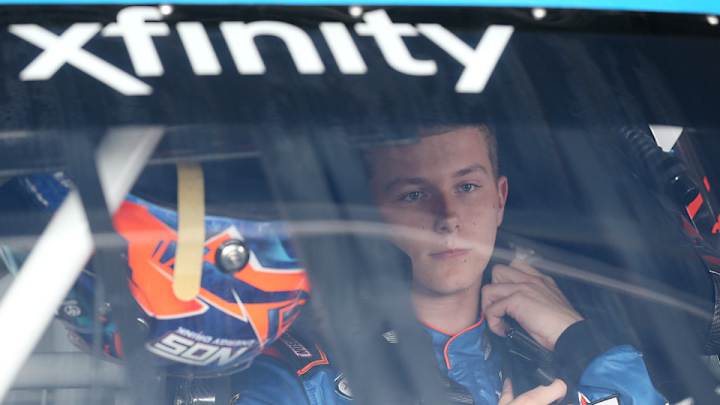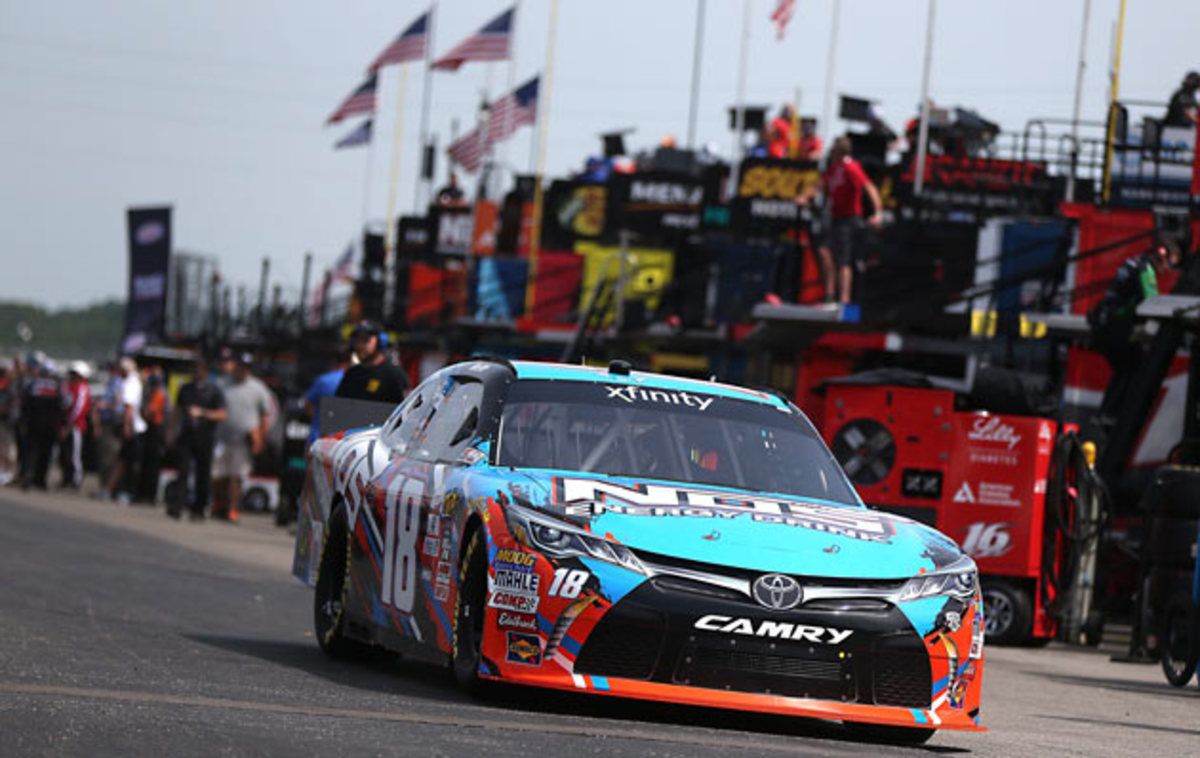Promising Xfinity driver Matt Tifft on way back from brain tumor

Your teams. Your favorite writers. Wherever you want them. Personalize SI with our new App. Install on iOS (iOS or Android).
Twenty is a fun age. Matt Tifft was only just beginning to realize it.
This year, after barely a decade spent paying his stock car racing dues, Tifft scored his biggest career break yet: a 13-date commitment to drive in NASCAR’s Xfinity series for Joe Gibbs Racing, currently the hottest franchise in the game. He’d be grabbing the wheel of Gibbs’ No. 18 Toyota-powered machine and sharing that ride with the reigning Sprint Cup champion (Kyle Busch) and the last Daytona 500 winner (Denny Hamlin). The expectations weren’t sky high according to Steve de Souza, the man who oversees the Xfinity program at Gibbs, but they weren’t middling either. “We just want him to go out there, run laps, finish the races on the lead lap—just kinda measure up,” he told SI.com last month.
Over his first six races, Tifft, a lanky kid from Hinckley, Ohio, steadily rose to the challenge. His last two starts, a pole at Talladega in late-April and an eighth-place finish at Dover in May, speak to his great powers of learning. That he is also a part-time student at UNC-Charlotte majoring in business, mostly to appeal to sponsors, says even more. “I wouldn’t say I live the normal life of a 20-year-old, that’s for sure,” he quips. “But it’s been cool.”
Really, the only bummer has been a sore lower back, a chronic and rather ironic injury for someone so young. After absorbing a pair of hard shots in the cockpit near the end of last year, Tifft had felt, well, kinda stiff. He thought an off-season of physical therapy might cure what ailed him—specifically, the lower left area of his back around his tailbone. But by the spring, after weeks of juggling his Xfinity schedule with obligations in the truck and ARCA series, Tifft found himself aching anew.
It got bad enough to compel him to seek further medical help. The recommendation that came back was a cortisone shot. The subsequent recovery would cost him some time out of the car but not too much; Tifft figured he’d be back on track in a couple weeks. When all this was relayed to deSouza, it was with less than a week before Tifft’s upcoming start at Iowa. Giving up his turn in the No. 18 machine, even for health reasons, was not easy for the young driver. But he did and nonetheless remained supportive of his one-off replacement, a super sub named Sam Hornish Jr.
Sam Hornish Jr.'s return is NASCAR's feel good story
While Hornish braced himself for what would turn out to be the best Father’s Day weekend ever, Tifft prepared for an MRI exam. It seemed to him like an occasion for deeper exploration, beyond his back to the inside of his head. Along his rapid climb to Xfinity, Tifft recalled having at least one concussion. In fact, he blamed it for a lingering sensitivity to light. More than a few times this season, he wondered if this suspected brain trauma from back in the day could have distorted the baseline of his ImPACT test, a key component of NASCAR’s concussion protocol. A recent screening of the movie Concussion had only deepened his suspicions. “I was gonna be in the machine anyway,” he says. “I figured, why not just do it?”
The results stopped Tifft cold. A half dollar-sized mass was discovered underneath his right temple. After a biopsy, it was diagnosed as a low-grade glioma—a benign tumor. There was no telling whether it might become cancerous. “It could be this winter,” Tifft says his doctors told him, “it could be when I’m 90.” The only certainty was this: It had to come out.
Tifft would have to have surgery. Brain surgery. That’s not something a person thinks of having to go through in their 20s, if ever in life. “I’m not gonna lie,” Tifft says. “That [diagnosis] was definitely an oh shit moment. This has been, by far, the best season of my career. It’s hard to break that momentum. There were definitely a couple of down days.”
Who could blame him for despairing just a little? A brain tumor isn’t like a broken arm or a torn ACL. It’s not as if there’s a robust tradition of high-level athletes resuming their careers after suffering through such a thing. Just last spring Lauren Hill, the cherubic Division III basketball player at Mount St. Joseph University in Cincinnati, lost her life to a malignant brain tumor; she was only 19. Richard Burns, a decorated British rally car driver, met a similar end in 2005; he was a bit older, 34.
Still, there was hope. There were a few young guys out there working their way back from imminent medical retirement. Persistent blood clotting and heart issues seemed as if they’d end the Sprint Cup career of Brian Vickers. Yet he returned to racing earlier this year as a fill-in for Tony Stewart. A benign brain tumor threatened Morgan Wells, a standout hurdler at LSU. But he’s making strides again.

What’s more, notes Tifft, “I actually got very lucky with where the tumor was at, in a relatively dead area in the right side of my brain. Had it been on the other side—where all your sensory stuff is, all your motions and your memory and all that kinda stuff—I probably would’ve been in a lot more trouble.”
The more Tifft put his plight in perspective, the more upbeat he became. When the time finally came for him to be prepped for surgery on July 1, he played the ham from his hospital bed and posted the goofy photograph proof to Twitter. The day after his procedure, which lasted three hours, he posted an appreciation video while wearing a bandage over his head. Minutes later, he threw up a photo of his uncovered dome, which featured a fresh centipede scar that arched from his right ear to the top of his head. “Sounds like they got the whole tumor out!” he wrote.
Video update! Thanks so much to everyone for all the positive thoughts and prayers pic.twitter.com/kdqANY3uoC
— Matt Tifft (@matt_tifft) July 2, 2016
So Tifft is taking things slow, following doctors’ orders and staying positive throughout. His desire is to be back in the saddle by the fall—not that JGR is rushing him. Regaining his natural reflexes, acute depth perception and fine sense of timing behind the wheel will be a process, sure. But the nice thing about Tifft's situation now is that he's free to stay the course or change direction if he so chooses. Either way, he has his whole life ahead of him again.
